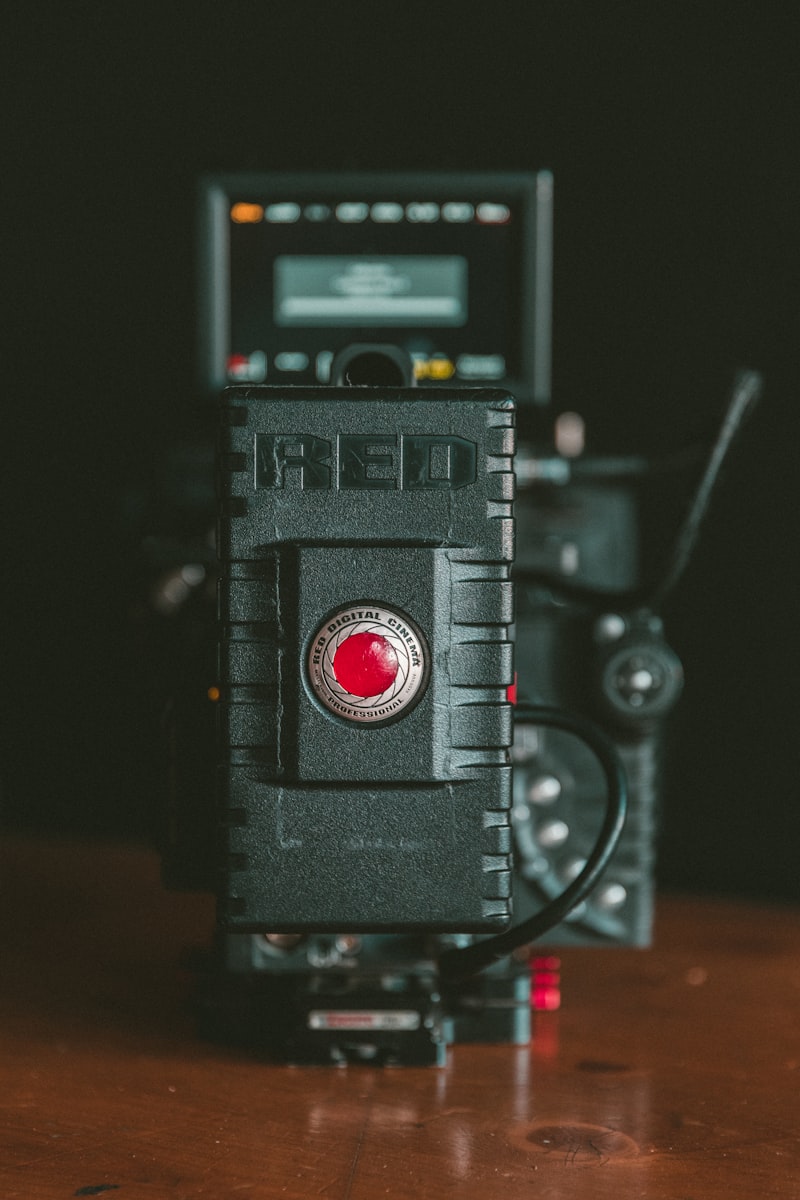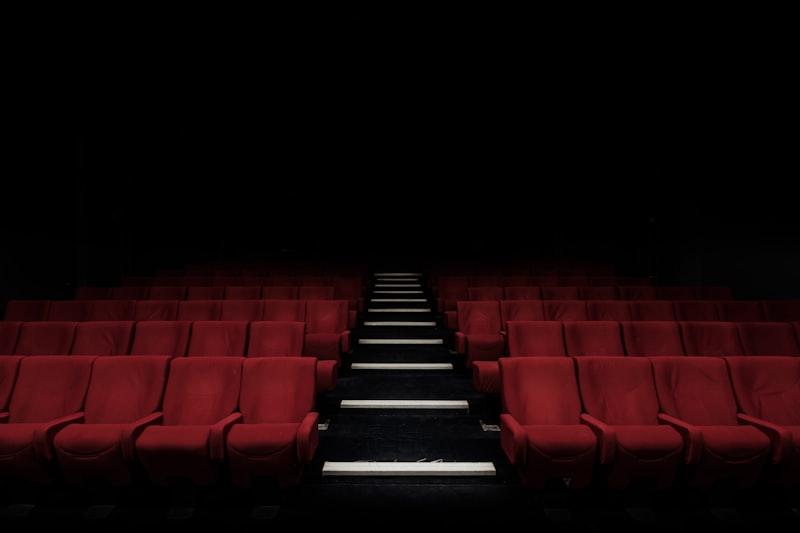Thriller movies have undergone a fascinating evolution over the decades, captivating audiences with their suspenseful plots and unexpected twists. From classic suspense dramas to modern psychological thrillers, this genre continues to redefine itself, keeping viewers on the edge of their seats.
In the early days of cinema, thrillers often focused on crime and mystery, drawing inspiration from literature and stage plays. Alfred Hitchcock, a pioneer in the genre, introduced iconic films like “Psycho” and “Vertigo,” which set the stage for suspenseful storytelling. These movies relied on atmospheric tension and intricate plots to engage viewers, laying the foundation for what would become a staple of thriller films.
As technology advanced, so did the techniques used to create suspense on screen. The 1970s and 1980s saw the rise of psychological thrillers, where the focus shifted to exploring the depths of human psyche. Movies like “Silence of the Lambs” and “Seven” delved into the minds of complex characters, blurring the lines between hero and villain. Audiences were drawn not only to the mystery of the plot but also to the psychological motives driving the characters’ actions.
In the 21st century, thrillers have continued to evolve with the incorporation of new cinematic techniques and storytelling styles. Directors like Christopher Nolan and David Fincher have pushed the boundaries of the genre with films such as “Inception” and “Gone Girl,” respectively. These movies combine intricate narratives with visual storytelling, creating a sensory experience that immerses viewers in the thrill of the unknown.
Moreover, the global appeal of thriller movies has expanded, with filmmakers from around the world contributing their own unique perspectives. International thrillers like “Oldboy” from South Korea and “The Girl with the Dragon Tattoo” from Sweden have garnered acclaim for their innovative storytelling and cultural relevance.
From Hitchcock to High-Tech: The Cinematic Evolution of Thriller Movies
Thriller movies have undergone a remarkable evolution over the decades, from the suspenseful masterpieces of Alfred Hitchcock to today’s high-tech spectacles that grip audiences with cutting-edge visuals and intense narratives. These films, known for their ability to keep viewers on the edge of their seats, have evolved not only in storytelling techniques but also in the use of technology to enhance the thrill.
Alfred Hitchcock, often hailed as the “Master of Suspense,” pioneered the genre with classics like “Psycho” and “Vertigo.” His films were characterized by psychological depth, clever plot twists, and the artful manipulation of suspense. Hitchcock’s use of camera angles and lighting created an atmosphere of tension that became iconic in the thriller genre.
As filmmaking technology advanced, so did the scope of thriller movies. The advent of computer-generated imagery (CGI) and advanced special effects allowed filmmakers to create visually stunning sequences that intensified the suspense. Modern thrillers often incorporate elaborate chase scenes, breathtaking stunts, and intricate CGI to immerse audiences in heart-pounding action.
Moreover, the evolution of sound technology played a crucial role in enhancing the suspense in thriller films. Dolby Digital and surround sound systems amplify every creak, whisper, and heartbeat, heightening the sensory experience for viewers and making them feel as if they are part of the unfolding drama.
Beyond technological advancements, the evolution of thriller movies reflects societal changes and shifting cultural fears. Contemporary thrillers delve into complex themes such as global espionage, cybercrime, and psychological warfare, reflecting the anxieties of the modern world. These films not only entertain but also provoke thought and discussion about contemporary issues.
The journey of thriller movies from Hitchcock’s suspenseful classics to today’s high-tech blockbusters is a testament to the genre’s enduring appeal and ability to captivate audiences across generations. As technology continues to evolve, so too will the storytelling techniques and visual spectacle of thriller films, ensuring that they remain a thrilling cinematic experience for years to come.
Unveiling the Psychology of Fear: How Thriller Movies Have Evolved

Imagine sitting in a darkened theater, heart racing, as suspense builds with each scene. Thriller movies have long captivated audiences, delving into the intricate realms of fear and suspense. From Alfred Hitchcock’s classic “Psycho” to modern-day psychological thrillers like “Gone Girl,” these films exploit our deepest fears and keep us on the edge of our seats.
The evolution of thriller movies reflects a profound understanding of human psychology. Early thrillers relied on suspenseful music, eerie settings, and unexpected plot twists to evoke fear. Hitchcock, a master of suspense, understood the art of manipulating audience emotions through careful pacing and psychological tension.
As cinema progressed, thrillers began exploring more complex psychological themes. Movies like “Silence of the Lambs” and “Seven” delved into the minds of serial killers, presenting a chilling exploration of human darkness. These films not only entertained but also sparked introspection into the depths of human nature and the primal fears that reside within us all.
In recent years, thriller movies have adapted to reflect modern anxieties and societal fears. Films such as “Get Out” and “A Quiet Place” blend suspense with social commentary, tackling issues of race, identity, and survival. These movies resonate deeply with audiences by tapping into real-world fears and anxieties, making the horror feel all too real.
The evolution of technology has also influenced the thriller genre. Advances in special effects and cinematography allow filmmakers to create more immersive and terrifying experiences. From jump scares to psychological mind games, today’s thrillers push the boundaries of fear, leaving audiences haunted long after the credits roll.
Thriller movies have evolved from simple suspense stories to complex explorations of human psychology and societal fears. By understanding what truly scares us and combining it with compelling storytelling, these films continue to thrill and terrify audiences worldwide, making us question our own fears and perceptions of the world around us.
Thrills, Chills, and Twists: A Timeline of Thriller Movies Through the Decades
Dive into the gripping world of thriller movies as we journey through decades of suspense, intrigue, and heart-pounding plot twists. From the classic noir films of the 1940s to the high-octane thrillers of today, cinema has continually evolved to keep audiences on the edge of their seats.
In the 1940s, masterpieces like Alfred Hitchcock’s “Psycho” set the stage for what would become a defining genre. These films, with their shadowy cinematography and morally ambiguous characters, laid the groundwork for the psychological thrillers that followed.
Moving into the 1960s and 1970s, thrillers took on a new intensity. Films like “The Silence of the Lambs” brought a chilling realism to the genre, exploring the minds of both heroes and villains in ways that captivated audiences worldwide.
By the 1980s and 1990s, thrillers diversified into subgenres like action-thrillers and neo-noir. Blockbusters such as “Die Hard” and “Seven” combined pulse-pounding action with intricate plots, creating a formula that resonated with moviegoers seeking both adrenaline and intellectual stimulation.
As we entered the 21st century, thrillers continued to evolve. Directors like Christopher Nolan redefined the genre with mind-bending narratives in films such as “Inception” and “Memento”. These movies challenged audiences to unravel complex puzzles while experiencing thrilling action sequences.
Today, the thriller genre remains as vibrant as ever. With advancements in technology and storytelling techniques, filmmakers push the boundaries of what constitutes suspense and fear. From psychological horrors to political conspiracies, each new thriller offers a fresh perspective on the human condition and our darkest fears.

Explore the evolution of suspense and storytelling in cinema by diving into the twists and turns of thriller movies through the decades. Experience the thrill of discovery as you uncover hidden motives, decipher clues, and navigate the intricate webs of deceit that define this beloved genre.
This article aims to capture the excitement and evolution of thriller movies while maintaining a conversational tone and engaging the reader with vivid descriptions and rhetorical questions.
Beyond Jump Scares: The Artistic Progression in Modern Thriller Films
Gone are the days when a thriller relied solely on cheap scares and predictable twists. Today, filmmakers delve deep into the human psyche, exploring themes of paranoia, moral ambiguity, and the fine line between heroism and villainy. Take films like “Gone Girl” and “Prisoners,” where the narrative twists and turns like a labyrinth, challenging viewers to question every motive and action.
One of the defining features of modern thrillers is their ability to blur genres. Directors seamlessly blend elements of psychological horror, crime drama, and even dark comedy to create a narrative that is as unpredictable as it is thrilling. This genre-bending approach not only keeps audiences guessing but also allows filmmakers to explore taboo subjects and societal issues in a compelling and thought-provoking manner.
Moreover, the visual language of modern thrillers has undergone a revolution. Cinematographers use light and shadow with the precision of a painter, creating an atmosphere that is as chilling as it is visually stunning. Every frame is meticulously crafted to heighten tension and evoke an emotional response, ensuring that the audience remains deeply immersed in the story unfolding before them.
In essence, modern thriller films represent a convergence of artistry and entertainment. They challenge conventional storytelling norms, push the boundaries of cinematic technique, and leave a lasting impact on those brave enough to embark on their suspenseful journey. As filmmakers continue to innovate and audiences crave more sophisticated narratives, one thing is certain: the evolution of thriller films is far from over.
The Rise of Psychological Thrillers: Exploring Minds and Motives on Screen
What makes psychological thrillers so compelling is their ability to delve into the darker aspects of human nature. They explore the depths of fear, paranoia, and obsession, offering audiences a glimpse into the minds of characters who are often morally ambiguous or psychologically troubled. Unlike traditional thrillers that rely solely on action-packed sequences, psychological thrillers stimulate the intellect, posing existential questions and challenging viewers to analyze the motives and actions of the characters.
One of the defining features of psychological thrillers is their emphasis on suspense and tension. Through skillful cinematography and sound design, these films create an atmosphere of unease, keeping viewers guessing about the true nature of the characters and their motivations. Every plot twist and revelation serves to deepen the mystery, encouraging audiences to unravel the psychological puzzle alongside the protagonists.


Moreover, psychological thrillers often draw inspiration from real-life psychological phenomena, adding a layer of authenticity to their narratives. By exploring themes such as trauma, identity crisis, or the nature of evil, these films offer more than just entertainment—they provoke introspection and discussion about the complexities of the human psyche.
The rise of psychological thrillers signifies a growing appreciation for narratives that challenge conventional storytelling norms. By exploring minds and motives on screen, these films invite audiences into a world where the boundaries between reality and imagination blur, leaving a lasting impact on those who dare to venture into the darker corners of the human psyche.
From Slashers to Supernatural: Genre Shifts in Thriller Cinema
Initially, slashers dominated the genre with their visceral intensity and focus on human fears and vulnerabilities. Films like “Halloween” and “Friday the 13th” set the stage for a wave of tension-filled narratives where protagonists faced off against relentless human antagonists, often with chillingly realistic motives. These movies thrived on the fear of the known, exploiting our deepest anxieties about personal safety and the darkness within ourselves.
However, as audience tastes evolved, so did the thriller genre. A significant shift occurred towards supernatural elements, injecting stories with otherworldly phenomena and paranormal activities. This transition introduced a new layer of intrigue and unpredictability. Movies like “The Sixth Sense” and “The Others” blurred the line between the natural and supernatural, challenging viewers to question reality and embrace the unknown.
What makes these genre shifts so compelling is their ability to tap into different aspects of fear and fascination. Slashers prey on our fear of the tangible and the immediate, while supernatural thrillers delve into the unexplainable and the eerie. They offer diverse experiences, from heart-pounding chases through dark alleys to spine-tingling encounters with ghosts and entities beyond comprehension.
Moreover, these shifts reflect broader societal trends and cultural interests. As our understanding of horror and suspense evolves, so too does our appetite for new and innovative storytelling. Directors and writers continually push boundaries, exploring fresh angles and incorporating elements that resonate with contemporary audiences.
The journey from slashers to supernatural thrillers in cinema represents a fascinating evolution in storytelling. It showcases how filmmakers adeptly adapt to changing tastes and preferences while continuing to deliver captivating narratives that evoke fear, wonder, and intrigue. As the genre continues to evolve, one thing remains certain – the thrill of the unknown will always captivate audiences seeking to be both shocked and amazed.
Technology and Tension: How Thriller Films Adapt to Changing Times
Think about it: what makes a thriller truly gripping? It’s not just about heart-pounding chase scenes or unexpected plot twists anymore. Today, filmmakers harness cutting-edge technology to create a more immersive experience for viewers. From high-definition visuals that bring every detail to life, to intricate sound design that heightens tension in every scene, technology has become a crucial tool in the thriller filmmaker’s arsenal.
Take the evolution of surveillance technology, for instance. In classic thrillers like Alfred Hitchcock’s “Rear Window,” the protagonist’s voyeuristic viewpoint was limited to what he could see from his apartment window. Fast forward to today’s thrillers, where characters navigate a world filled with drones, hidden cameras, and advanced tracking systems. These innovations not only intensify the suspense but also reflect our modern anxieties about privacy and surveillance.
Moreover, the internet age has ushered in a new era of psychological thrillers that delve into the darker aspects of human behavior online. Films like “Searching” and “Unfriended” exploit our fears of cyberbullying, identity theft, and digital deception, showing how technology can be a weapon in the wrong hands.
But it’s not just technology that shapes today’s thrillers; societal tensions play a pivotal role too. In times of political uncertainty and social upheaval, filmmakers often use thrillers to explore our collective fears and anxieties. Movies like “Get Out” and “Parasite” masterfully blend suspense with social commentary, challenging viewers to confront uncomfortable truths about race, class, and power dynamics.
Frequently Asked Questions
How has audience taste influenced the evolution of thriller movie themes?
Discover how audience preferences have shaped the development of thriller movie themes over time.
What are the key elements that make a thriller movie successful?
Discover the essential elements that contribute to the success of thriller movies. Learn how effective pacing, suspenseful plot twists, compelling characters, and atmospheric settings create tension and captivate audiences.
How have thriller movies evolved over time?
Explore the evolution of thriller movies through the decades, tracing how storytelling techniques, cinematography, and audience expectations have transformed, shaping this genre into a cornerstone of cinematic suspense and intrigue.
What defines a thriller movie genre?
A thriller movie genre is defined by its intense, suspenseful plot that keeps audiences on the edge of their seats. These films often involve elements of danger, excitement, and unexpected twists, designed to evoke strong emotional responses such as anxiety and excitement from viewers.
Who are some influential directors in the history of thriller films?
Explore the careers of influential thriller film directors such as Alfred Hitchcock, known for his suspenseful storytelling and iconic films like ‘Psycho’ and ‘Vertigo’. Another notable figure is David Fincher, celebrated for his dark and atmospheric thrillers like ‘Seven’ and ‘Fight Club’. Additionally, Christopher Nolan is renowned for his intricate narratives and mind-bending thrillers such as ‘Memento’ and ‘Inception’.



